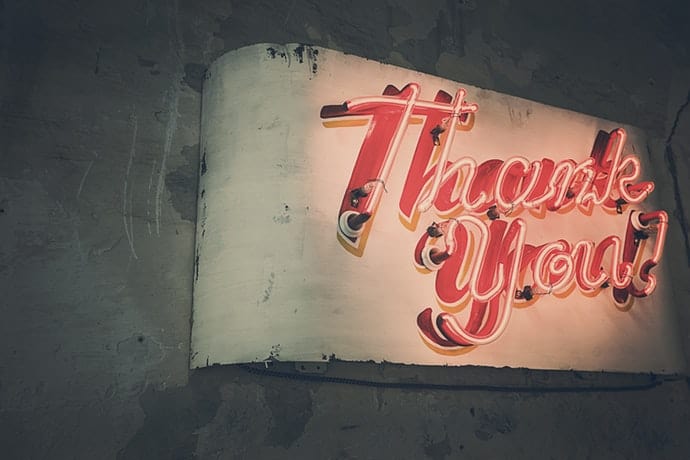“Thank you” is always a safe bet, you’ll never be told off for being polite. But a recent survey found that 4 out of 10 Brits think that “thank you” is too formal –1 out of 10 would go as far as calling it old-fashioned. I don’t agree, but here is a list of a few alternatives with some very subjective comments.
1. Thanks
A quick and informal way to say thank you, often followed by an exclamation mark. Acceptable for use in business emails if you are familiar with the person you are corresponding with.
A quick side note: many assume that the comparative of “thanks” would be “thanks a lot”. But “thanks a lot” carries the danger of sounding sarcastic. The same goes for “thanks a million” – in some contexts, they both end up sounding like “thanks for nothing”. Stick to “Many thanks”.
2. Cheers
Not to be mistaken for a toast, this is the Brits’ attempt at seeming relaxed and easy-going. There is a growing trend of signing off this way, replacing “Best regards” with “Cheers”, possibly in the hope of spreading some cheerfulness. Not common in the US, use with care.
3. Ta
Even less formal than cheers and reserved for smaller feelings of appreciation, as in “Could you pass me the salt? Ta.” but not “You saved my life! Ta.” Friendly, but not used in writing.
4. I appreciate it
More common in the US and usually used in conjunction with “thank you”, it can be used in business emails when acknowledging a specific gesture: “Thank you for (good deed), I appreciate it.” It’s like a double-thanks. Its verbal partner is “Much appreciated”.
5. Great, wicked, nice one
The trend nowadays seems to express gratitude with words of approval. The ones mentioned here are mainly British; Americans may say awesome, Australians sweet. At the risk of sounding incredibly old, I’d say these are best reserved for youth.
Goodwill mission
As you can see, most of these are used verbally and not suited for formal correspondence. Though there are phrases that express gratitude in a very formal way, a simple “thank you” is often the most direct and effective way of showing appreciation; “thank you very much” if you’re feeling really grateful. And don’t forget: it’s the feeling that counts.
Cover image via Pexels (CC0)
